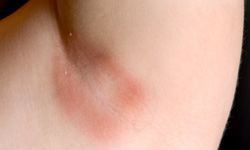You've been working in the yard, ripping out all those unwanted weeds. Sure, grass may make you a little itchy, but now you're scratching a small red patch and wondering where it came from. Could it be a skin rash?
Skin rashes are common, and there are a lot of them. Some come from an allergic reaction, while others could be fungal or viral. Generally speaking, a rash is considered any change to your skin's normal color or texture [source: WebMD].
Advertisement
Let's look at some tips for identifying different kind of rashes, as well as some ways to clear them up.
